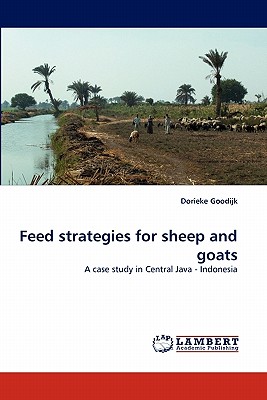
Feed Strategies for Sheep and Goats
Paperback
Currently unavailable to order
Please enter your email and a message will be sent to you when this product becomes available on our website.
ISBN13: 9783844302233
Publisher: Lap Lambert Academic Pub
Published: Jan 24 2011
Pages: 124
Weight: 0.42
Height: 0.29 Width: 6.00 Depth: 9.00
Language: English
Also in
Agriculture
This Is What You Just Put in Your Mouth?: From Eggnog to Beef Jerky, the Surprising Secrets
Di Justo, Patrick
Paperback
The Mushroom at the End of the World: On the Possibility of Life in Capitalist Ruins
Tsing, Anna Lowenhaupt
Paperback
The Home Blacksmith: Tools, Techniques, and 40 Practical Projects for the Home Blacksmith
Ridgway, Ryan
Paperback
Dark Calories: How Vegetable Oils Destroy Our Health and How We Can Get It Back
Shanahan, Catherine
Hardcover
The First-Time Homesteader: A Complete Beginner's Guide to Starting and Loving Your New Homestead
Sowards, Jessica
Paperback
Chicken Keeping Pure and Simple: A Fun, Friendly Guide to Backyard Chicken Keeping
Husted, Nikki
Paperback
Epic Homesteading: Your Guide to Self-Sufficiency on a Modern, High-Tech, Backyard Homestead
Espiritu, Kevin
Paperback
Let's Become Fungal!: Mycelium Teachings and the Arts: Based on Conversations with Indigenous Wisdom Keepers, Artists, Curators, Feminists and Mycolog
Ostendorf-Rodríguez, Yasmine
Paperback
Life and Death of the American Worker: The Immigrants Taking on America's Largest Meatpacking Company
Driver, Alice
Hardcover
The Science of Spice: Understand Flavor Connections and Revolutionize Your Cooking
Farrimond, Stuart
Hardcover
Animal, Vegetable, Miracle - Tenth Anniversary Edition: A Year of Food Life
Kingsolver, Barbara
Kingsolver, Camille
Hopp, Steven L.
Paperback
Farming While Black: Soul Fire Farm's Practical Guide to Liberation on the Land
Penniman, Leah
Paperback
Snoopy and the Spy: A Saga of Espionage, Ingenuity, and the Epic Battle to Save International Harvester
Klancher, Lee
Hardcover
Basic Butchering of Livestock & Game: Beef, Veal, Pork, Lamb, Poultry, Rabbit, Venison
Mettler, John J.
Paperback
Accidental Shepherd: How a California Girl Rescued an Ancient Mountain Farm in Norway
Greensfelder, Liese
Hardcover
Land Rich, Cash Poor: My Family's Hope and the Untold History of the Disappearing American Farmer
Reisinger, Brian
Hardcover
The Beekeeper's Bible: Bees, Honey, Recipes & Other Home Uses
Jones, Richard a.
Sweeney-Lynch, Sharon
Hardcover
The Self-Sufficient Life and How to Live It: The Complete Back-To-Basics Guide
Seymour, John
Hardcover
The Oyster Book: A Chronicle of the World's Most Fascinating Shellfish--Past, Present, and Future
Martino, Dan
Hardcover
The Living Soil Handbook: The No-Till Grower's Guide to Ecological Market Gardening
Frost, Jesse
Paperback
Sea of Grass: The Conquest, Ruin, and Redemption of Nature on the American Prairie
Hage, Dave
Marcotty, Josephine
Hardcover
White Light: The Elemental Role of Phosphorus-In Our Cells, in Our Food, and in Our World
Lohmann, Jack
Hardcover
Mushrooming Without Fear: The Beginner's Guide to Collecting Safe and Delicious Mushrooms
Schwab, Alexander
Paperback
How to Speak Chicken: Why Your Chickens Do What They Do & Say What They Say
Caughey, Melissa
Paperback
You Can Farm: The Entrepreneur's Guide to Start and Succeed in a Farm Enterprise
Salatin, Joel
Paperback
Heart of the Hive: Inside the Mind of the Honey Bee and the Incredible Life Force of the Colony
Kearney, Hilary
Hardcover
The Independent Farmstead: Growing Soil, Biodiversity, and Nutrient-Dense Food with Grassfed Animals and Intensive Pasture Management
Dougherty, Shawn
Dougherty, Beth
Paperback
The Market Gardener: A Successful Grower's Handbook for Small-Scale Organic Farming
Fortier, Jean-Martin
Paperback
The Fleece & Fiber Sourcebook: More Than 200 Fibers, from Animal to Spun Yarn
Ekarius, Carol
Robson, Deborah
Hardcover
The Julia Rothman Collection: Farm Anatomy, Nature Anatomy, and Food Anatomy
Rothman, Julia
Paperback
The Painful Truth about Hunger in America: Why We Must Unlearn Everything We Think We Know--And Start Again
Chilton, Mariana
Hardcover
Food for Life: The New Science of Eating Well, by the #1 Bestselling Author of Spoon-Fed
Spector, Tim
Paperback
Folks, This Ain't Normal: A Farmer's Advice for Happier Hens, Healthier People, and a Better World
Salatin, Joel
Paperback
Polyface Designs: A Comprehensive Construction Guide for Scalable Farming Infrastructure
Salatin, Joel
Slattery, Chris
Paperback
The Seed Farmer: A Complete Guide to Growing, Using, and Selling Your Own Seeds
Brisebois, Dan
Paperback
Unraveling: What I Learned about Life While Shearing Sheep, Dyeing Wool, and Making the World's Ugliest Sweater
Orenstein, Peggy
Paperback
The Backyard Homestead Seasonal Planner: What to Do & When to Do It in the Garden, Orchard, Barn, Pasture & Equipment Shed
Hansen, Ann Larkin
Paperback
A Call to Farms: Reconnecting to Nature, Food, and Community in a Modern World
Grayson, Jennifer
Hardcover
The Backyard Chicken Keeper's Bible: Discover Chicken Breeds, Behavior, Coops, Eggs, and More
Federman, Rachel
Ellis, Sonya Patel
Ford, Jessica
Hardcover
Farm-Raised Kids: Parenting Strategies for Balancing Family Life with Running a Small Farm or Homestead
Kulla, Katie
Paperback
Farming the Woods: An Integrated Permaculture Approach to Growing Food and Medicinals in Temperate Forests
Gabriel, Steve
Mudge, Ken
Paperback
The Lost Flock [Us Edition]: Rare Wool, Wild Isles and One Woman's Journey to Save Scotland's Original Sheep
Cooper, Jane
Paperback
Storey's Guide to Keeping Honey Bees, 2nd Edition: Honey Production, Pollination, Health
Sanford, Malcolm T.
Bonney, Richard E.
Paperback
Animals Make Us Human: Creating the Best Life for Animals
Grandin, Temple
Johnson, Catherine
Paperback
Wicked Bugs: The Louse That Conquered Napoleon's Army & Other Diabolical Insects
Stewart, Amy
Hardcover
The Proof Is in the Dough: Rural Southern Women, Extension, and Making Money
Beasley, Kathryn L.
Paperback
An Absolute Beginner's Guide to Raising Backyard Turkeys: Varieties, Feeding, Shelter, Care
Benjamin, Stacy
Paperback
Keeping a Family Cow: The Complete Guide for Home-Scale, Holistic Dairy Producers, 3rd Edition
Grohman, Joann S.
Paperback
Beeswax Alchemy: How to Make Your Own Soap, Candles, Balms, Creams, and Salves from the Hive
Ahnert, Petra
Paperback
A Bite-Sized History of France: Gastronomic Tales of Revolution, War, and Enlightenment
Hénaut, Stéphane
Mitchell, Jeni
Paperback
The Chicken Health Handbook: A Complete Guide to Maximizing Flock Health and Dealing with Disease
Damerow, Gail
Paperback
The Lean Micro Farm: How to Get Small, Embrace Local, Live Better, and Work Less
Hartman, Ben
Paperback
Healing Grounds: Climate, Justice, and the Deep Roots of Regenerative Farming
Carlisle, Liz
Hardcover
In Search of the Perfect Peach: Why Flavour Holds the Answer to Fixing Our Food System
Fubini, Franco
Hardcover
Microfarms: Organic Market Gardening on a Human Scale
Sécheret, Aurélie
Fortier, Jean-Martin
Paperback
The Biochar Handbook: A Practical Guide to Making and Using Bioactivated Charcoal
Wilson, Kelpie
Paperback
What Your Food Ate: How to Restore Our Land and Reclaim Our Health
Biklé, Anne
Montgomery, David R.
Paperback
Song of Increase: Listening to the Wisdom of Honeybees for Kinder Beekeeping and a Better World
Freeman, Jacqueline
Paperback
The Regenerative Garden: 80 Practical Projects for Creating a Self-Sustaining Garden Ecosystem
Rose, Stephanie
Paperback
The Field Guide to Fleece: 100 Sheep Breeds & How to Use Their Fibers
Ekarius, Carol
Robson, Deborah
Paperback
How the Other Half Eats: The Untold Story of Food and Inequality in America
Fielding-Singh, Priya
Paperback
Ways of Eating: Exploring Food Through History and Culture Volume 81
Wurgaft, Benjamin Aldes
White, Merry
Hardcover
Food Fix: How to Save Our Health, Our Economy, Our Communities, and Our Planet--One Bite at a Time
Hyman, Mark
Paperback
A Forest of Your Own: The Pacific Northwest Handbook of Ecological Forestry
Hanson, Kirk
Zuckerman, Seth
Paperback
Storey's Guide to Raising Sheep, 5th Edition: Breeding, Care, Facilities
Simmons, Paula
Ekarius, Carol
Paperback
The Swine Republic: Struggles with the Truth about Agriculture and Water Quality
Jones, Chris
Paperback
Lumberjack: Inside an Era in the Upper Peninsula of Michigan - 70th Anniversary Edition
Crowe, William S.
Paperback
The Seed Detective: Uncovering the Secret Histories of Remarkable Vegetables
Alexander, Adam
Paperback
Beyond Labels: A Doctor and a Farmer Conquer Food Confusion One Bite at a Time
McCullough, Sina
Salatin, Joel
Paperback
The Organic Medicinal Herb Farmer, Revised Edition: How to Produce High-Quality Herbs on a Market Scale
Carpenter, Jeff
Paperback
Farmall Century: 1923-2023: The Evolution of Red Tractors and Crawlers in the Golden Age of International Harvester
Klancher, Lee
Hardcover
Honey Bee Vet - The adventures of a veterinarian seeking to doctor one of the world's most important animals.
Farone, Tracy
Paperback
The Sexual Politics of Meat - 25th Anniversary Edition: A Feminist-Vegetarian Critical Theory
Adams, Carol J.
Paperback
Gaining Ground: A Story of Farmers' Markets, Local Food, and Saving the Family Farm
Salatin, Joel
Pritchard, Forrest
Paperback
Grow Your Soil!: Harness the Power of the Soil Food Web to Create Your Best Garden Ever
Miessler, Diane
Paperback
Our Native Bees: North America's Endangered Pollinators and the Fight to Save Them
Embry, Paige
Hardcover
Attracting Native Pollinators: The Xerces Society Guide Protecting North America's Bees and Butterflies
The Xerces Society
Paperback
Quality Agriculture: Conversations about Regenerative Agronomy with Innovative Scientists and Growers
Kempf, John
Paperback


 Sign-In
Sign-In Cart
Cart